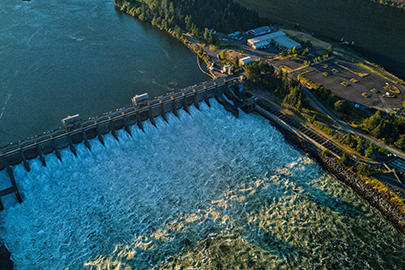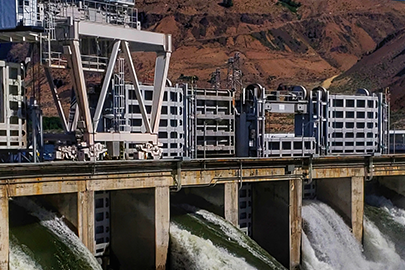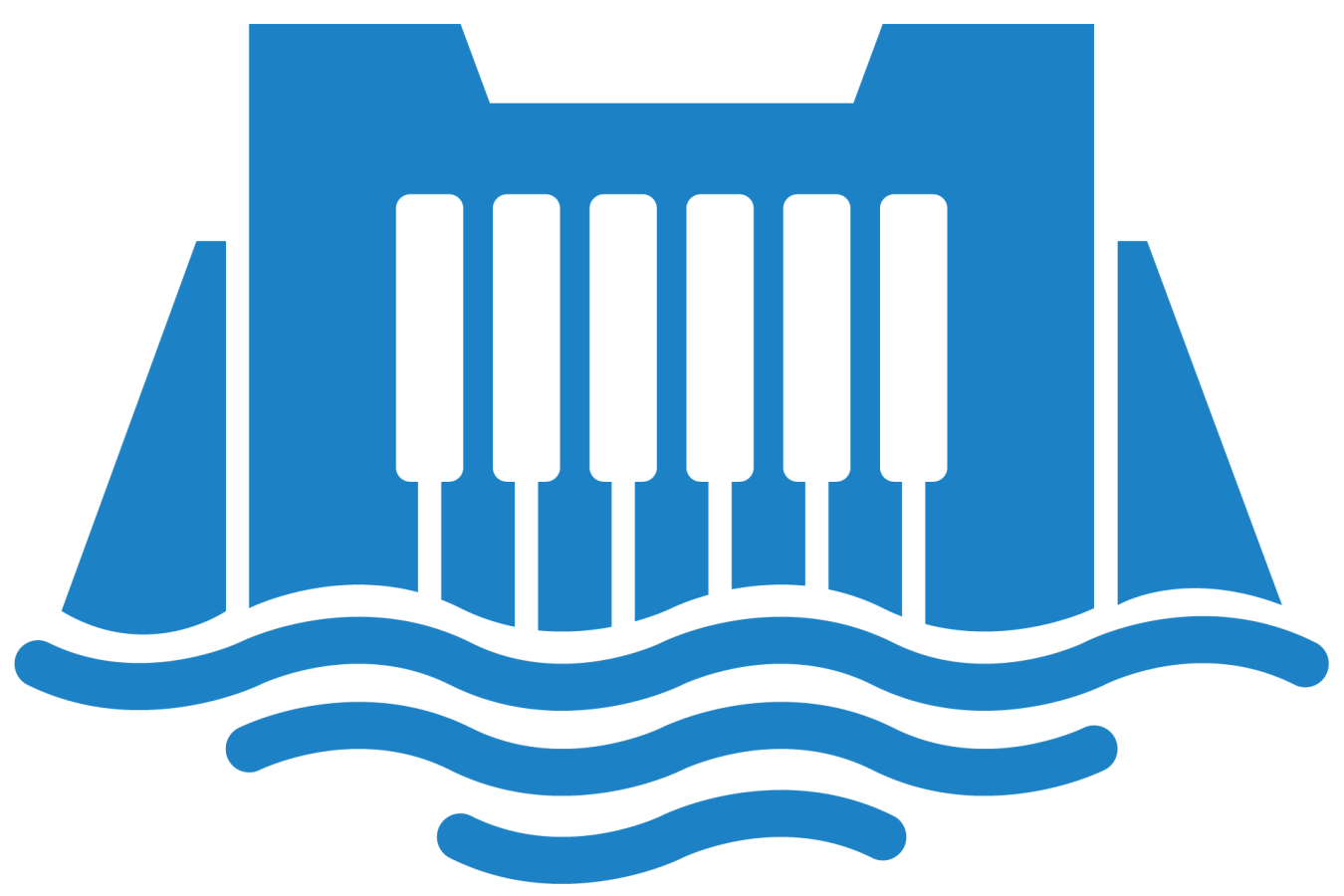New tool provides environmental and energy stakeholders with a systematic and transparent method for identifying the potential environmental impacts of a hydropower project.
Water Power Technologies Office
March 9, 2022Data Access, Analytics, and Workforce Development
Project Name: Environmental Decision Support: Science-Based Tools for Hydropower Stakeholder Collaboration
Project Team: Oak Ridge National Laboratory (lead), Kearns & West, a mission advisory board, and a science advisory board
Lead Recipient Location: Oak Ridge, Tennessee

Over the past year, Oak Ridge National Laboratory led a project team that developed a new tool—an online, interactive, and science-based River Function Indicator Questionnaire—to provide hydropower stakeholders with a systematic and transparent method for identifying the potential environmental impacts of a hydropower project. The tool’s questions address a checklist of 42 river function indicators derived from an extensive literature review of environmental metrics. This review integrated the viewpoints of multiple types of hydropower stakeholders and the scientific research community. Stakeholders—including a hydropower owner/operator, several environmental nongovernmental organizations, and a federal agency—are currently conducting pilot tests in New Hampshire, Vermont, and Kansas.
Most privately owned U.S. hydropower facilities are required to obtain an operating license from the Federal Energy Regulatory Commission (FERC). This licensing process is heavily stakeholder driven and typically takes five to seven years per project. During the study negotiation phase of the licensing process, environmental and energy stakeholders, as well as regulators from tribal, state, and federal agencies, must collaboratively determine the proposed project’s impacts and whether any additional studies or mitigation will be required. Applicants have indicated this is one of the most challenging parts of the FERC licensing process due to the diverse priorities and perspectives among hydropower stakeholders, which can lead to communication breakdowns and delays. The new River Function Indicator Questionnaire, part of the Environmental Decision Support Toolkit, is designed to support hydropower stakeholders during the licensing process by giving everyone at the negotiating table a standardized set of metrics.
Data Access, Analytics, and Workforce Development Projects
-
 Newly compiled “data stories” from river basins across the United States highlight the importance of accessible and usable water data to inform decision-making processes.
Newly compiled “data stories” from river basins across the United States highlight the importance of accessible and usable water data to inform decision-making processes. -
 New report evaluates and quantifies factors that affect the time, costs, risks, and uncertainties to license or relicense hydropower projects.
New report evaluates and quantifies factors that affect the time, costs, risks, and uncertainties to license or relicense hydropower projects. -
 The National Renewable Energy Laboratory and several educational nonprofits develop new hydropower curricula and teacher training to help cultivate the next generation of the hydropower workforce.
The National Renewable Energy Laboratory and several educational nonprofits develop new hydropower curricula and teacher training to help cultivate the next generation of the hydropower workforce. -
 HydroSource, an online platform developed by ORNL to house hydropower data, makes significant improvements and implements new datasets, tools, and other resources for hydropower researchers and decision makers.
HydroSource, an online platform developed by ORNL to house hydropower data, makes significant improvements and implements new datasets, tools, and other resources for hydropower researchers and decision makers.
WPTO's Hydropower e-newsletter features news on R&D and applied science to advance sustainable hydropower and pumped-storage technologies.
The WPTO e-newsletter brings funding opportunities, events, publications, hydropower, and marine energy updates directly to your inbox.


